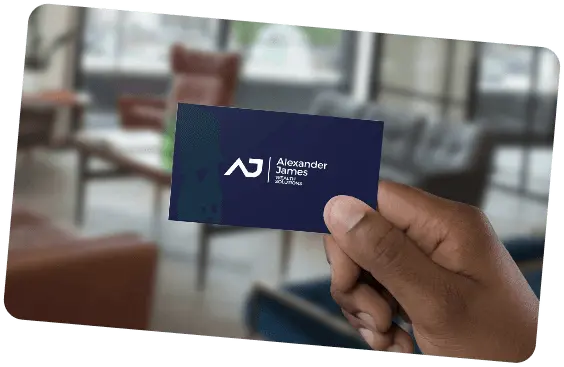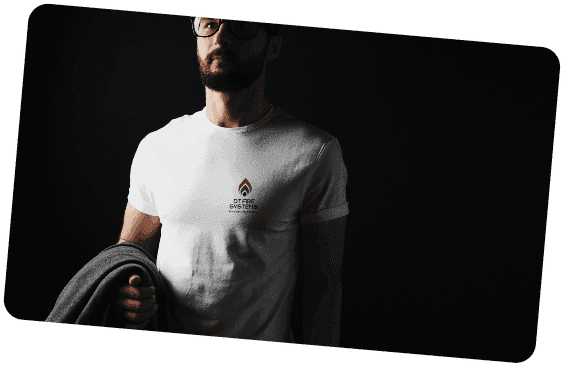Creative Web Design Services in Surrey
Your website is often the first impression potential customers have of your business, and in today’s ultra-competitive digital landscape those first few moments are critical. At Thunderbolt Digital, we design and build bespoke websites for businesses across Surrey and the rest of the UK, helping brands stand out and achieve measurable growth.
Based in Farnham, our award-winning web design agency creates websites that not only look professional but also deliver results. Every site we build is designed around user experience, search engine performance, and conversion goals, helping our clients generate more enquiries, leads and sales.
Our web design process always begins with a deep understanding of your business, your customers, and your objectives. We take the time to learn what sets you apart, who you want to reach, and what actions you want your visitors to take — whether that’s requesting a quote, subscribing to your newsletter, booking a consultation, or completing a purchase. This discovery stage ensures that every decision we make is aligned with your goals and the needs of your audience.
Once we have this foundation, our web design team will create wireframes and prototypes to map out the entire user journey. This stage allows us to refine the structure of your website, ensuring that navigation is intuitive, information is easy to access, and key conversion points are strategically placed. By planning your website build in this way, we create a clear, logical flow that removes friction and helps users get to where they need to be quickly and confidently.
With the framework in place, we move into crafting fully responsive designs that perform seamlessly across desktop, mobile and tablet devices. Every page is created to balance strong visual appeal with functionality, ensuring that the design not only captures attention but also supports performance.
Our in-house web development team then brings these designs to life with clean, secure, and scalable code. By combining modern UI and UX best practice with SEO-friendly website architecture, we create websites that load quickly, rank strongly in search engines, and guide users smoothly towards becoming customers.
Blending Aesthetics with Performance
Effective web design brings together user interface (UI) design, user experience (UX) design and search engine optimisation (SEO), and our Surrey-based web design team are experts at bringing these elements together. By integrating design, usability and search performance, we create websites that not only look professional and are easy to navigate, but also convert visitors into customers and drive measurable business growth. This holistic approach to web design and development is what sets us apart as a leading web design agency in Surrey.
We understand that every business has its own goals and challenges, which is why we provide bespoke web design solutions that are developed around your specific requirements. Our approach is flexible and adaptive, ensuring that each website we create is designed to reflect your brand, engage your audience and achieve your objectives. Whether you’re an ambitious start-up looking to build your first online presence or an established brand in Surrey seeking to refresh and improve your existing website, our web design services are focused on supporting growth, driving enquiries and delivering measurable results for your business.
Our team of professional web designers in Surrey brings together years’ of experience and a strong track record of delivering successful websites for businesses of all types and sizes. With expertise across a wide range of industries, we know how to design websites that not only look professional but also work hard to generate enquiries, leads and sales. Every project we take on is approached with the same high standards of creativity, technical skill and attention to detail, whether it involves a simple brochure site, a complex ecommerce platform, or a full website redesign.
What sets Thunderbolt apart is our ability to balance design and performance. We don’t just create visually appealing layouts — we build responsive, user-friendly websites that are optimised to support your wider digital marketing strategy. By combining strong design with practical functionality, we help businesses across Surrey and the rest of the UK turn their websites into engines for growth.







Why Choose Thunderbolt Digital for Web Design in Surrey?
As a full-service digital agency, Thunderbolt offers more than just web design. With in-house expertise covering SEO, PPC, social media marketing and email marketing, we provide joined-up digital solutions that ensure your website is part of a wider growth strategy. This integrated approach means that your site is never designed in isolation, but as part of a wider strategy designed to increase visibility, traffic and conversions.
We’ve worked with everyone from small local businesses in Farnham, Guildford and Woking, to large national brands and international organisations, delivering websites that combine creativity with commercial impact. By choosing Thunderbolt Digital, you’re not just working with a Surrey-based web design agency, but with a trusted Google Agency Partner that has a history of delivering measurable results across a wide range of industries and sectors.
We pride ourselves on our collaborative approach, transparent communication, and dedication to quality. If you’re looking for a professional web design company in Surrey that can take your digital presence to the next level, Thunderbolt Digital is the partner you can rely on.
Get In Touch
Talk to us today! We are a full-service digital web design agency based in the Georgian market town of Farnham, Surrey. If you would like to get in touch, please give us a call, or complete the enquiry form below and we will get back to you.
01252 413757
howdy@wearethunderbolt.com